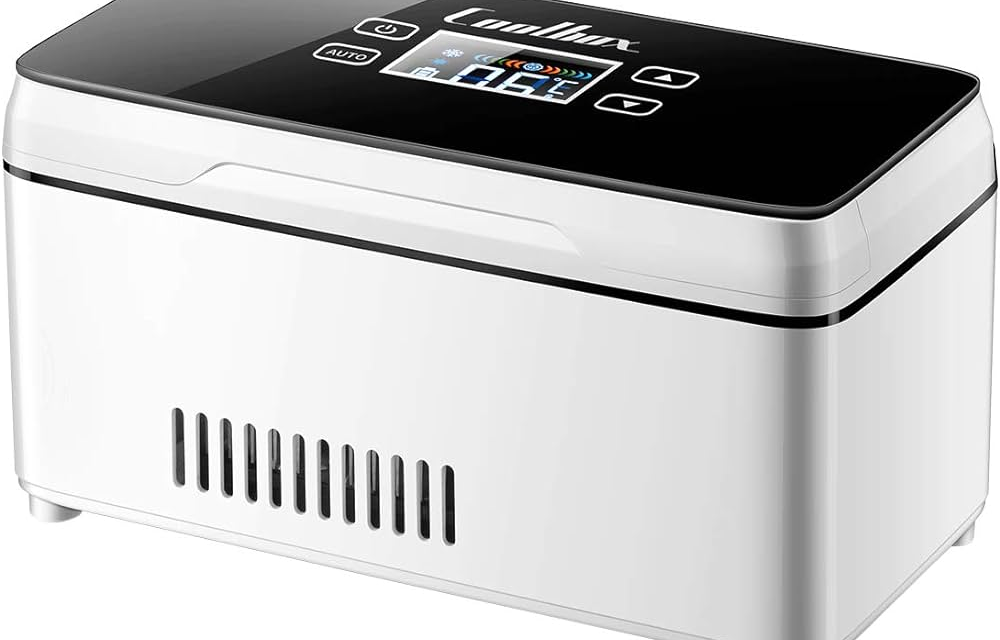The pharmaceutical industry relies on an unbroken cold chain to ensure the safety and efficacy of medications from the moment they are manufactured to the point of administration. Ice box for medicine play a pivotal role in maintaining this cold chain, safeguarding temperature-sensitive pharmaceuticals as they traverse the complex journey from production facilities to end-users. This article explores how medical ice boxes contribute to preserving the cold chain for pharmaceuticals and discusses their significance in ensuring that medications remain within the recommended temperature range.
The Cold Chain Challenge:
The cold chain refers to the temperature-controlled supply chain that pharmaceuticals must navigate to retain their potency and effectiveness. This journey involves multiple stages, including manufacturing, storage, transportation, and distribution. Any deviation from the recommended temperature range during these stages can compromise the quality of medications, rendering them ineffective or even harmful to patients.
1. Manufacturing Phase:
The cold chain begins within the controlled environments of pharmaceutical manufacturing facilities. Here, medications are produced, processed, and packaged under specific temperature conditions to maintain their stability. Medical ice boxes come into play even at this early stage, ensuring that medications are promptly cooled and stored at the required temperatures before they embark on their journey.
2. Storage and Transportation:
Once pharmaceuticals leave the manufacturing facility, they are often transported and stored in various conditions. Medical ice boxes act as portable, temperature-controlled vessels, maintaining the desired temperature range during transit. This is particularly crucial in scenarios where medications need to be transported over long distances or to remote areas where traditional refrigeration may be unavailable.
Contributions of Medical Ice Boxes to Cold Chain Management:
A. Temperature Control Mechanisms:
Medical ice boxes employ various temperature control mechanisms to ensure that pharmaceuticals are consistently kept within the recommended temperature range. These mechanisms may include ice packs, gel packs, or even advanced electronic cooling systems. The versatility of these solutions allows for adaptability to different environmental conditions.
B. Insulation and Thermal Efficiency:
The construction of medical ice boxes emphasizes insulation and thermal efficiency. High-quality insulation materials prevent external temperature fluctuations from affecting the interior, and the design ensures minimal heat exchange, thus preserving the cold chain integrity.
C. Portable and User-Friendly Design:
One of the key advantages of medical ice boxes is their portability. This feature is particularly valuable during transportation, as medications can be easily carried to various locations without compromising their temperature stability. The user-friendly design ensures that healthcare professionals, aid workers, or patients can handle and transport medications safely.
D. Extended Temperature Maintenance:
Medical ice boxes are designed to sustain the required temperature for an extended period. This is especially critical during transportation delays or when medications need to be stored temporarily in conditions where standard refrigeration is not available.
E. Adaptability to Different Medications:
The pharmaceutical landscape encompasses a wide range of medications with varying temperature sensitivity. Medical ice boxes are versatile enough to accommodate different types of pharmaceuticals, from vaccines to biologics, ensuring that each medication’s unique temperature requirements are met.
F. Monitoring and Validation Systems:
Many modern medical ice boxes are equipped with temperature monitoring and validation systems. These systems provide real-time data on the internal temperature, allowing users to monitor and verify that pharmaceuticals are consistently stored within the specified range. This data is crucial for quality control and regulatory compliance.
G. Compliance with Regulatory Standards:
Medical ice boxes adhere to stringent regulatory standards to ensure the safety and efficacy of pharmaceuticals. This includes compliance with guidelines set by health authorities such as the World Health Organization (WHO) and regulatory bodies in different countries.
Case Study: The Impact of Medical Ice Boxes in Vaccination Campaigns
In mass vaccination campaigns, medical ice boxes play a central role in ensuring the effectiveness of vaccines. Take, for example, a scenario where a vaccine needs to be transported to a remote village with limited access to electricity and refrigeration. A well-designed medical ice box, equipped with reliable temperature control mechanisms, can maintain the vaccine’s potency during the journey. This ensures that individuals in remote areas receive vaccines that are just as effective as those administered in well-equipped medical facilities.
Considerations for Medical Refrigerator Price:
While medical ice boxes play a crucial role in the cold chain, it’s essential to acknowledge that there are alternative solutions, such as medical refrigerators, available for pharmaceutical storage. When evaluating the medical refrigerator price, factors such as capacity, energy efficiency, and compliance with regulatory standards come into play.
1. Capacity:
The size and capacity of a medical refrigerator determine its suitability for specific storage needs. Larger capacities may come at a higher price but provide the advantage of storing a greater quantity of medications, making them suitable for healthcare facilities with high patient volumes.
2. Energy Efficiency:
Energy-efficient medical refrigerators may have a higher upfront cost but can result in long-term savings on energy bills. These refrigerators often come with advanced features, such as temperature control systems and insulation, that contribute to their energy efficiency.
3. Compliance with Regulatory Standards:
Regulatory compliance is non-negotiable in the pharmaceutical industry. Medical refrigerators that meet or exceed regulatory standards may have a higher price tag, but this investment ensures the safe storage of medications and adherence to quality control measures.
4. Temperature Monitoring and Control:
Advanced temperature monitoring and control features can contribute to the overall cost of a medical refrigerator. However, these features are invaluable in maintaining the cold chain and preventing temperature excursions that could compromise pharmaceutical integrity.
Conclusion:
In conclusion, medical ice boxes are indispensable in preserving the cold chain for pharmaceuticals, playing a critical role in maintaining the temperature-sensitive nature of medications from manufacturing to administration. Their contributions to temperature control, insulation, portability, and adaptability make them essential tools in ensuring that pharmaceuticals reach end-users with their efficacy intact. While medical refrigerators also serve this purpose, the choice between medical ice boxes and refrigerators involves considering factors such as capacity, energy efficiency, and compliance with regulatory standards. Ultimately, both solutions contribute to the overarching goal of safeguarding the integrity of medications and upholding the quality standards of the pharmaceutical industry.




